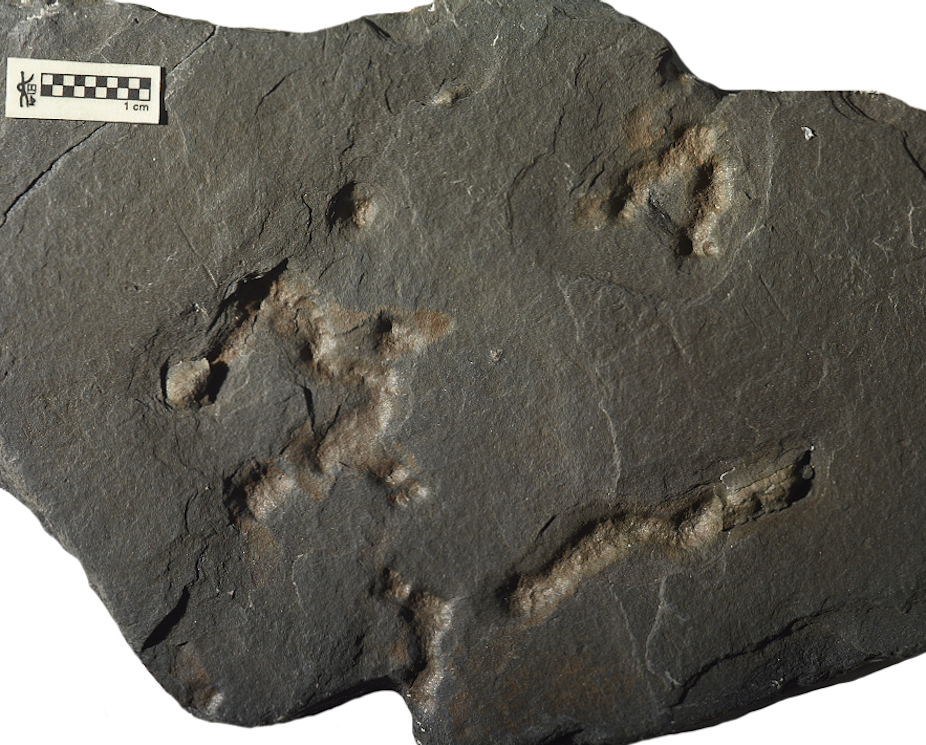In a suspension of disbelief, the countless readers who have picked up J.R.R. Tolkien’s Lord of the Rings books have readily accepted that Ents, the ancient treelike creatures of the fictional Fangorn forest, walk, talk and even dispense wisdom for hobbits lost in the woodland they shepherd. But while our imaginations can readily accept that tree people walk around Middle Earth, it can be harder to fathom how the first creatures that lived on our own planet came into being and started moving around.
We know that the first life on Earth was in the form of microscopic single cell organisms, which have been dated back to at least 3,400 million years ago. But these creatures didn’t just stay where they were and then all of a sudden start evolving into complex cells, the predecessors of plants and animals – they moved around.
Locomotion enables life to escape danger, reach new food sources and find mating partners. While complex animals walk around on legs and feet, swim with fins or fly with wings, these primitive prokaryotes (single cell organisms which don’t have a nucleus) had a very different, rather bizarre, style of locomotion. In addition to amoeboid movements (in which cells move in a crawling motion), researchers have found that prokaryotes tumble, swarm, and glide.
Until recently, scientists believed that the first credible and abundant traces of locomotion associated with macroscopic life only appeared relatively recently in the geological record, around 600 million years ago. But now our team of international scientists has found evidence that sets a new upper boundary to when complex eukaryotic-like locomotion first appeared on Earth.
As detailed in our newly published paper, what we found shows that previous examples of mobility were not the first on the planet. In fact, we have found proof of locomotion on Earth 2.1 billion years ago – much further back than previous evidence of single cell organisms alone, let alone their movement.
Moving the time frame
The type of movement we found was more than just a single cell going it alone. In rocks from Gabon, West Africa, we found fossilised burrows which suggest a cluster of single eukaryotic cells came together to form a slug-like multicellular organism. Alongside these burrows, which are just a few millimetres in diameter, we also found fossilised microbial mats (communities of microbes), which we think the organism that produced the trails may have fed on.

After analysing these burrows and trails with sophisticated x-ray imaging techniques, together with biological and chemical characterisation of isotopes of sulphur, and mineralogical information captured in the trace fossils, we concluded that they were produced by an object that was moving through preformed seafloor sediments, and that this object was biological in origin. These primitive creatures probably went about their business in the same way slime moulds – unrelated eukaryotic organisms that live together as a mass – do today, coming together to push through the sediments of an oxygenated inland coastal sea.
So what does this mean for our understanding of life on Earth? Oxygen first appeared permanently in the atmosphere around 2,450 million years ago. It is believed that some time after 2,100 million years ago, for reasons that are still unclear, atmospheric oxygen content began to fall below the level needed to sustain the successful development of complex life forms. Then, around 635 million years ago, oxygen began to take a reverse turn and rose again in the atmosphere. Intriguingly, this second rise in atmospheric oxygen content coincides with the first widespread and unambiguous appearance of complex animals.
Around this time, similar locomotive traces like those reported in our paper appeared in oxygenated seafloor sediments. These remained a permanent fixture and can be found in modern marine sediments, where they are linked to the movements of complex diverse eukaryotic organisms.
The question now is whether the trails and burrows we found from 2,100 million years ago are life’s first failed experimentation at locomotion at a complex level. If so, this may also be indicative of the fact that the decline in atmospheric oxygen content could have accounted for why it took hundreds of millions of years for complex animal life to emerge after the first rise in atmospheric oxygen content.
If this is true, then it may be pointing us to the fact that the appearance of sufficient oxygen in the atmosphere after 635 million years ago may have spurred and supported the large-scale emergence and radiation of complex life to ecological dominance.

